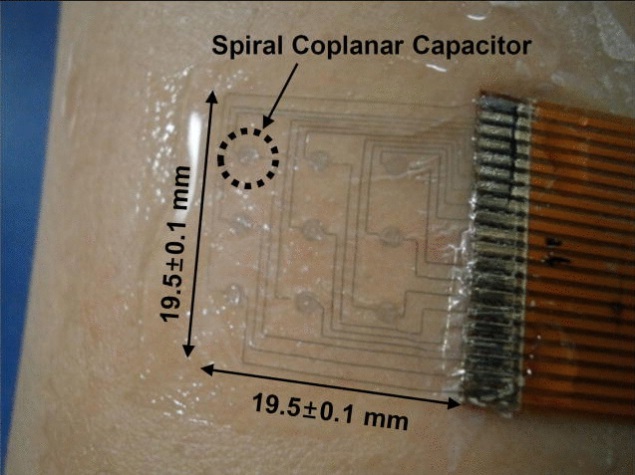- Home
- Wearables
- Wearables News
- New Emotion Sensor Paves Way for Personalised Advertising and More: Study
New Emotion Sensor Paves Way for Personalised Advertising and More: Study

A team of researchers at KAIST in Daejeon, South Korea developed the wearable polymer sensor that can directly measure the degree and occurrence on the skin of goose bumps (technically known as "piloerection"), which is caused by sudden changes in body temperature or emotional states.
The technology is based on an electronic device known as a coplanar capacitor and detects goose bumps by virtue of a simple, linear relation between the deformation of the sensor and the decrease of the capacitance.
"We found that the height of the goose bump and the piloerection duration can be deduced by analysing obtained capacitance change trace," explained researcher Young-Ho Cho.
While more work still needs to be done to correlate such physical measurements with emotional states, the work suggests that quantitatively monitoring goose bumps in real-time as an indicator of human physical or emotional status is possible.
This could pave the way for personalised advertising, music streams or other services informed by direct access to the emotions of the end user.
"In the future, human emotions will be regarded like any typical biometric information, including body temperature or blood pressure," Cho said.
Through use of microfabrication technology, Cho and colleagues built the sensor using a conductive polymer called PEDOT:PSS for the capacitors, which is flexible compared to brittle metallic conductive materials.
The capacitors were embedded in a silicon substrate via a multi-step spin-coating process, giving them a spiral shape and coplanar structure.
This gave them high capacitive density and high deformability while remaining only 1.2 micrometres thick.
The silicon substrate, known as Ecoflex 0030, was selected due to its biocompatibility and high degree of flexibility relative to human skin, researchers said.
It is also highly thermal and photo-stability, which allows the embedded polymer devices to maintain their performance in diverse conditions.
The study is published in the journal Applied Physics Letters.
Catch the latest from the Consumer Electronics Show on Gadgets 360, at our CES 2026 hub.
- Samsung Galaxy Unpacked 2025
- ChatGPT
- Redmi Note 14 Pro+
- iPhone 16
- Apple Vision Pro
- Oneplus 12
- OnePlus Nord CE 3 Lite 5G
- iPhone 13
- Xiaomi 14 Pro
- Oppo Find N3
- Tecno Spark Go (2023)
- Realme V30
- Best Phones Under 25000
- Samsung Galaxy S24 Series
- Cryptocurrency
- iQoo 12
- Samsung Galaxy S24 Ultra
- Giottus
- Samsung Galaxy Z Flip 5
- Apple 'Scary Fast'
- Housefull 5
- GoPro Hero 12 Black Review
- Invincible Season 2
- JioGlass
- HD Ready TV
- Laptop Under 50000
- Smartwatch Under 10000
- Latest Mobile Phones
- Compare Phones
- OPPO Reno 15 Pro Max
- Honor Win RT
- Honor Win
- Xiaomi 17 Ultra Leica Edition
- Xiaomi 17 Ultra
- Huawei Nova 15
- Huawei Nova 15 Pro
- Huawei Nova 15 Ultra
- Asus ProArt P16
- MacBook Pro 14-inch (M5, 2025)
- OPPO Pad Air 5
- Huawei MatePad 11.5 (2026)
- Xiaomi Watch 5
- Huawei Watch 10th Anniversary Edition
- Acerpure Nitro Z Series 100-inch QLED TV
- Samsung 43 Inch LED Ultra HD (4K) Smart TV (UA43UE81AFULXL)
- Asus ROG Ally
- Nintendo Switch Lite
- Haier 1.6 Ton 5 Star Inverter Split AC (HSU19G-MZAID5BN-INV)
- Haier 1.6 Ton 5 Star Inverter Split AC (HSU19G-MZAIM5BN-INV)












